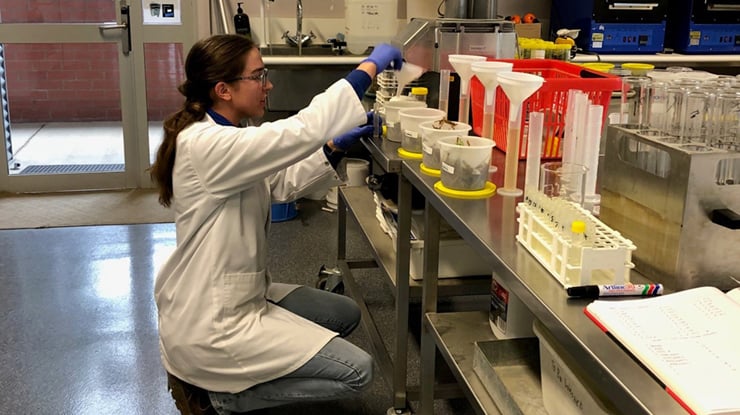 Technical Officer Sabrina Meurs from NSW DPIRD preparing samples.
Technical Officer Sabrina Meurs from NSW DPIRD preparing samples.
Livestock gains while reducing methane
A new test is being developed to make it easier for producers to choose low-methane pastures without compromising livestock performance.
Enteric methane emissions from ruminant livestock account for approximately 11% of Australia’s total greenhouse gas (GHG) emissions1. While methane is more potent than carbon dioxide, its shorter atmospheric lifespan means that reductions in emissions can deliver relatively quick benefits for climate mitigation, usually within 12 years2.
For several decades, researchers have understood different pasture species can influence methane output. This new MLA-supported project will help identify low-methane options and contribute to Australia’s net zero emissions goal.
Richard Meyer, Feed Chemist at the NSW Department of Primary Industries and Regional Development (DPIRD), is leading the development of a new near infrared spectroscopy (NIRS) test to rapidly assess the methane output potential of pasture species.
It builds on previous research into methane efficiency in cattle and sheep and aims to integrate pasture selection into industry-wide emissions reduction strategies.
“NIRS is already widely used to analyse feed quality,” Richard said.
“By refining our calibrations, we can now predict methane output from pastures in a way that is faster and cheaper than traditional methods, such as using specialist metabolic chambers or in-vitro fermentation techniques.”
Screening for low-methane species
Methane emissions from livestock have been a research focus for decades. However, practical solutions for extensive grazing systems have been limited.
While methane-reducing feed additives are being explored for feedlot systems, for producers operating in extensive grazing environments (around 95% of Australian production systems) pasture-based solutions offer a more accessible strategy.
The red meat industry is committed to contribute to Australia’s net zero ambitions. Pasture-based methane reduction strategies could play a significant role in emissions reductions without adding farm management complexity for producers.
So far, Richard’s team have analysed more than 500 pasture samples (of a planned 1,000), with some species significantly reducing methane output.
“We know that some plant species naturally reduce methane when digested by ruminants,” Richard said.
“Our work is now focused on identifying which species are both practical for livestock systems and effective in reducing emissions while also creating a tool which accurately predicts methane production when these species are consumed by sheep and cattle.
“This will be a valuable tool for producers wanting to estimate their on-farm emissions or identify pasture options that align with their sustainability goals.”
The new NIRS testing method will allow seed producers and pasture trial networks to screen forages at scale and provide producers with data-driven pasture recommendations.
Getting the balance right
One of the key concerns in methane mitigation strategies is whether selecting low-methane pastures will impact livestock health and productivity.
Richard’s team is working with other NSW DPIRD researchers to investigate pasture mixes that maintain or enhance production outcomes, while lowering emissions.
“Our goal isn’t just to reduce methane, it’s also to find solutions that keep livestock performing well,” he said.
“In many cases, better pasture management leads to higher productivity, which in turn reduces methane intensity per kilogram of red meat produced, because of quicker turn-off times.”
The analysis of the methane content of pasture samples by NIRS is expected to be available for wider industry use by June 2026. The team is working to refine its accuracy, with the aim of making it accessible to other testing laboratories, commercial feed suppliers and livestock producers following completion of the project.
Watch the below video about low-methane pasture trials:



